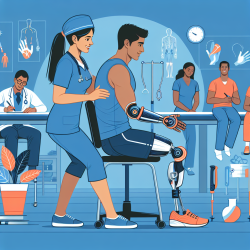Understanding the Challenges of Multiple Limb Amputation
In the United States, over 1.6 million individuals have undergone at least one amputation, with a significant portion experiencing multiple limb loss. This subpopulation faces amplified challenges compared to those with single-limb loss, including increased pain, lifestyle adjustments, and quality of life concerns. Research highlights that amputations due to dysvascular disease now account for over 80% of new cases annually, a trend expected to rise alongside the aging population and increasing prevalence of diabetes.
Key Recommendations for Practitioners
Practitioners can enhance their care for patients with multiple limb amputations by focusing on several key areas:
- Pain Management: Implement a multimodal approach that includes pharmacotherapy, physical modalities, and complementary therapies. Early and aggressive pain management can reduce rehabilitation time and prevent chronic pain development.
- Rehabilitation Strategies: Initiate rehabilitative interventions during acute hospitalization. A well-coordinated interdisciplinary team approach is essential, involving surgeons, physiatrists, therapists, and prosthetists.
- Assistive Technology and Adaptive Equipment: Utilize advanced prosthetics and orthotics to enhance patient independence and quality of life. Encourage the use of adaptive devices and assistive technologies for daily living and vocational activities.
Encouraging Further Research
While current research provides a foundation for effective care strategies, continuous advancements in prosthetic technology and rehabilitation methods necessitate ongoing research. Practitioners are encouraged to stay informed about new developments and consider participating in studies to contribute to the evolving field of amputee care.
To read the original research paper, please follow this link: Special Considerations for Multiple Limb Amputation.










